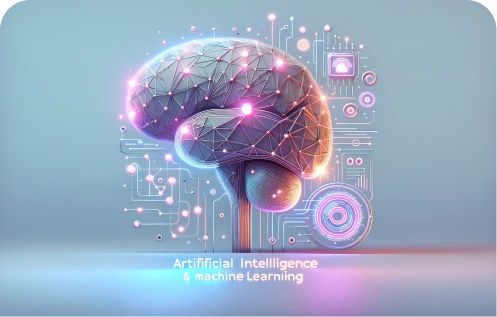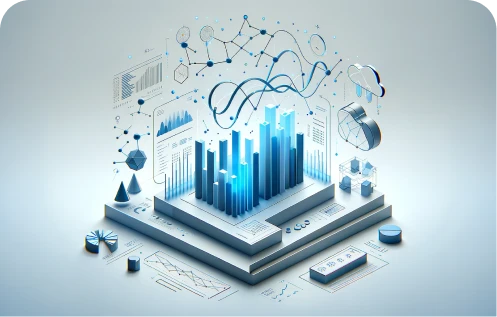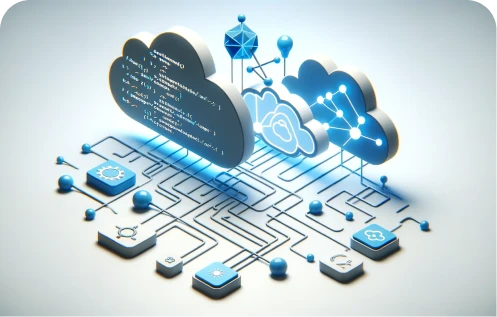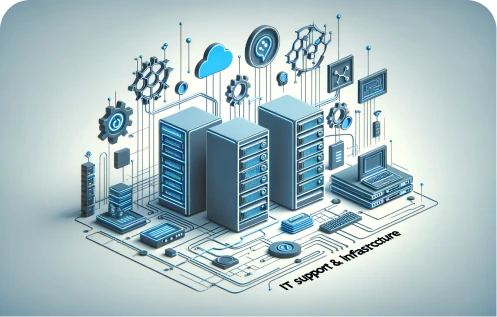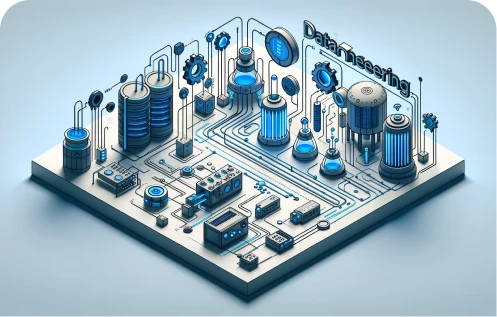There’s no doubt that 2020 will go down as one of the most tumultuous years in recent history. The COVID-19 pandemic has dramatically shifted the way in which people work, live their lives and interact with the broader society. The long-term effects are unknown, but with the increase in remote work and social distancing becoming the norm, it only creates more space for innovation within the field of artificial intelligence.
Not only will AI play a massive role in structuring the ‘new way’ of life, but it will also give birth to technologies that prevent such outbreaks in the future. As a result, new jobs will also arise from AI innovation. Whilst the future and how our lives will be in the future is unknown; there is one certainty: it will be AI directed. So, here’s a preview of the AI trends in 2021 that will shape our lives, change the way businesses operate and advance civilisation in ways unexpected:
AI-powered chips industry set to boom.
With the proliferation of investment in AI technology comes the need for a processor that is fast enough to process data demanded by these technologies. Even the most sophisticated CPU struggles to keep up with the processing speeded demanded by AI to complete activities such as NLP, speech recognition and machine learning. This is why a study by Allied Market Research estimates that the AI chip industry is estimated to reach over $100 million in market value by 2025.
The main reason? AI-enabled chips are able to handle the processing speed that CPUs cannot. It is more efficient and thus will likely see companies invest hugely into the development of these, as it is not only about speed but also leads to a competitive edge. It allows for more straightforward tasks to be completed within seconds, and complicated tasks to be simplified. This is because AI chips are able to complete more computations per unit of energy consumed than a CPU can. AI-enabled chips are also built to facilitate predictive analytics and advanced calculations needed by AI algorithms.
AI-Enable chips are segmented on their type, industry and processing speed in the following categories:
- Graphical Processing Unit (GPU)
- Application-specific integrated circuit (ASIC)
- FIeld programmable gate array (FPGA)
- Central Processing UNIT (CPU)
- Other
Based on research in North America, Latin America, Europe and Asia, the Global Artificial Intelligence chip market is expected to grow in the following way:
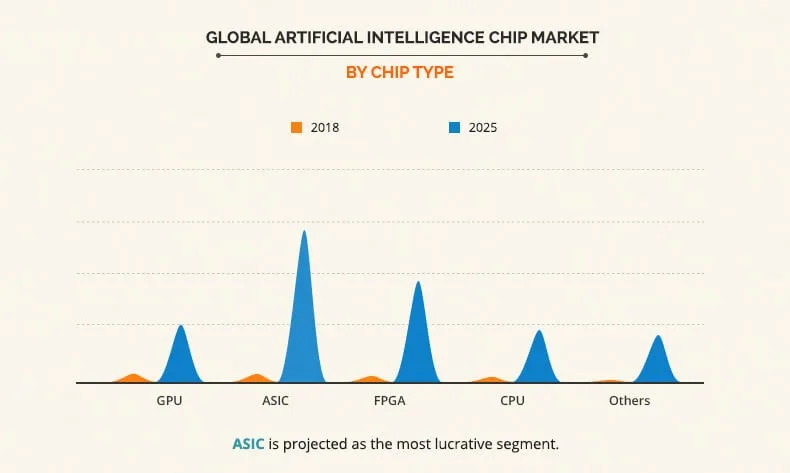
Source: https://www.alliedmarketresearch.com/artificial-intelligence-chip-market
The growth in AI-enabled chips will also have a spillover effect into other industries. In particular, it will lead to the emergence of autonomous robots – i.e. with AI-enabled chips; there will be an increased development in robots being able to make their own decision and control themselves. A trend is definitely worth keeping an eye on!
AI-Driven Decision Making and Forecasting
The World Economic Forum estimates that the COVID-19 pandemic will likely end up costing between $8.1 and $15.8 trillion globally.
Based on that estimated loss in global finances, the need for smart, timely, and AI-driven decision making couldn’t be more in demand than it is now. Through the use of Machine Learning and AI, forecasts can accurately predict diverse data sets up to 90%. This trend of deep investment in business forecasting is expected to continue and have an upward trajectory.
Some of the fields, in AI-based business forecasting, is likely to feature prominently are:
- Fraud detection
- Medical apps for early detection and diagnosis
- Personal assistants (think Alexa, Siri)
- Suicide prevention
- Sales forecasting
- Debt management
- Pricing
- Stock optimisation
- Workforce planning (new ways of work – remote working and beyond)
- Demand planning
All of the fields mentioned above are heavily data-driven. As a result of these masses of data banks, business forecasting will allow organisations to make smarter decisions based on meaningful and AI-driven information. For example, a company looking to analyse their pricing structure may be able to look at sales per region, market etc. and make a decision based on increasing or decreasing their price. This, however, is a tedious and manual way of completion. Through AI, an organisation is able to import mass data of opportunities, success, win rate percentages, sales data, customer behaviour and present an output the recommended forecasts and helps teams make decisions for the future.
With COVID-19, businesses feel quite vulnerable, and many will be in a recovery phase for the next few years. As a result, they will heavily rely on AI technology to ensure smarter decisions are made in every business decision. This includes workforce planning – i.e. the need for hires, business efficiency per employee and predictive analysis of employees and skills needed for the future.
Computerised Detection and Prevention
The prevalence of AI will increasingly become more obvious to everyday citizens, instead of just appearing as back-end processes. A simple example of this is when you purchase a product overseas, and your bank sends you a message to confirm if the transaction that was made was done by you. Although a very layman example, on a broader scale this is being done.
The rise in automated detection and prevention is expected to be a booming industry for AI. Of immediate focus is COVID-19 detection and prevention. Many countries have already launched pilot projects with drones to detect if social distancing rules are being adhered to. These drones will not only be limited to monitoring social distancing rules, but also with advanced capabilities of monitoring high temperatures of people in large crowds such as at concerts, shopping malls, schools etc. These systems will be able to act as a feedback loop to authorities for decision making and to implement preventative measures.
These AI-type feedback technologies are not only used in the medical field but are also increasingly surging in the criminal prevention area. Both cyber and offline crime is an area of focus for AI practitioners, as criminals are equally skilled in these technologies as those fighting them. For example, last year, a group of criminals used an AI software called deepfake, to replicate a CEO’s voice. As a result, the CEO was scammed of $250 000. Using AI, cybercriminals are increasing their efforts to retrieve personal information from people – through social media, linking various online activities to a single profile.
The demand for AI preventative technologies is at its highest. Cybercriminals are increasingly attacking much larger businesses with a higher success rate. As a result, AI and machine learning approaches are going to be at the forefront of Cyber Defence – i.e. the use of algorithms to detect and predict threats.
Conversational AI taking the next step
By now, coming across conversational AI is pretty much the norm. The moment you land on a Facebook page of a hotel or an airline, you’re prompted with a message to assist you. However, the limitations are quite glaring. The assistance provided by these chatbots are often premeditated, lacks the human feeling and is not flexible.
2021 will see a massive transformation for conversational AI bots. There will be an increase in AI bots that are personalised, processes more advanced problems and has a greater understanding of customer sentiment. In this way, your standard chatbots are likely to be replaced by conversational AI bots that are able to have a back and forth conversation with a customer as if they were human.
Conversational AI will also enter the space of ‘convenience’. These are already evident with technologies such as Amazon Alexas, but their capability in 2021 is expected to advance to the next level. Arranging meetings, sending emails, being able to do deep searches at a fast pace will be key focus areas. Whilst these technologies are usually adapted by individuals; enterprises are expected to invest heavily in company-specific conversational AI products that will improve business optimisation.
AI and human interaction
From Bicentennial Man (1999) to Her (2013), fiction films have long predicted a world where AI replaces humans. Well, it’s 2020, and that still has not yet happened. The predictive trend for 2021 is that this will not happen (and may never actually happen). However, the world of AI technology has long promised a society that looks much different to the way it usually operates. With COVID-19 quickly shaping and shifting human behaviour, AI is expected to play an advanced role in the interaction with humans. The rise in machines and AI will continue to proliferate, with massive job loss and remote working trends. As a result, the need for reskilling will increase to enable humans to interact with AI and be processors of machines. Research in the field of AI is also expected to receive massive investment, as companies look to work towards a safer future.










